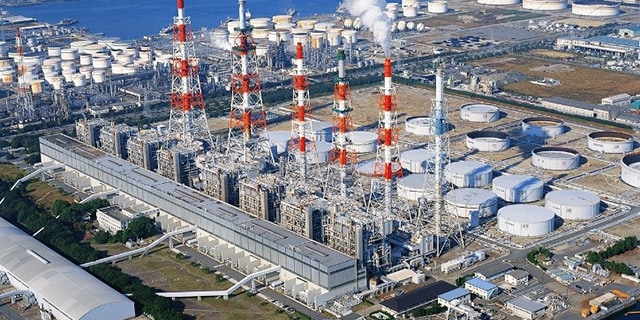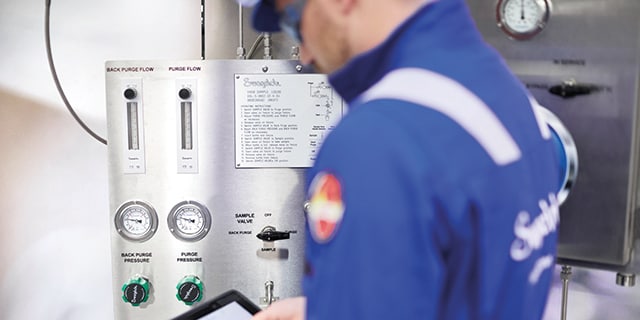Tackling Global Complexity for a Successful Petrochemical Plant Construction Megaproject

Tackling Global Construction Complexity for a Successful Megaproject
Major petrochemical plant construction projects often involve the coordination of dozens of global vendors, typically over the course of several years of careful planning, engineering, and development. Once in commission, the stakes are high for these megaprojects, as the massive investments required mean owners are especially invested in safe, reliable, and profitable operations upon startup.
Such was the case for a recently completed $27 billion petrochemical megaproject in the Asia-Pacific region. With projected capacity of 300,000 barrels of crude oil per day and estimated production of 7.7 Mt per year of various petrochemical products, the 22,000-acre complex will serve as a major supplier helping to address the region’s growing energy needs for years to come.
For this project, and those like it, fluid system management is of the utmost importance. Choosing the right fluid system components for fabrication and working with the right vendors are critical priorities from the initial stages of planning through completion. Small bore tubing and tube fittings in these systems handle dozens of chemical processes ranging from simple utilities to hazardous fluids, as well as applications involving high pressures and/or high temperatures, throughout the complex. The specification of a single supplier for fluid system components, including valves, tubing and fittings can be advantageous, helping the owner ensure quality, consistency, safety, and avoid risks of intermixing components of different manufacturers across the site.
Achieving this kind of consistency across a megaproject of this scale, however, comes with its share of challenges and complexities. To explain how the owner of this project achieved standardization of tubing and fittings throughout several key fluid system applications in the complex, we sat down with Swagelok Malaysia CEO Andrew BT Wong and KCS Manager KK Tan to discuss the success of the project from start to finish:
SRP: What are some of the upfront challenges of a project of this scope?
Andrew: A construction project this massive will typically involve many different players from around the globe, and that can lead to some significant complexities. To give a sense of scale, at the peak of the construction, there were up to 70,000 people on-site working on different facilities, projects, and applications. Communication across project stakeholders, proper training among different installers, and language barriers among different vendors from several countries posed some major challenges.
Each of these applications involved many different Engineering, Procurement, Construction, and Commissioning (EPCC) companies from around the world and required specialized expertise to design and engineer these applications or “EPCC Packages.” That is a major trend happening in the petrochemical industry right now, too. Packages are becoming increasingly specialized, especially in petrochemical plants and refineries.
SRP: What are the implications for fluid system applications in these different packages?
KK: No matter the facility’s operation area, the productivity, reliability, and safety of the systems are the primary priorities for the applications. Many of the processes involve high pressure or high temperature, as well as difficult and at times dangerous fluids that must be contained within the system; leaks can pose a major safety hazards and impact operational efficiencies.
The standardization of high-quality parts across different EPCC Packages is becoming a common practice and is particularly crucial with megaprojects, with the owner-operator specifying a particular make of tube and fitting throughout the site. This strategy has a few benefits. On projects this large, with so many people working on different applications, the more an owner-operator can standardize, the easier it is to validate proper installation, maintain the equipment throughout its lifetime, and avoid incompatibility between different parts. It is also important to note that specifying a less expensive fluid system component often not worth the upfront small savings.
Such was the case on this project—Swagelok components were specified for all fluid system packages across the complex. On our end, delivering on those specified packages was a highly collaborative process. At least 15 Swagelok Sales and Service Centers throughout Asia and Europe worked closely with the numerous EPCCs involved in the project, and supported by the Swagelok Corporate team and Swagelok Capital Projects Company (SCPC).
SRP: What is involved in collaborating with the EPCCs?
Andrew: There are a few ways a fluid system application supplier can make this relationship smoother across the project. For example, if a certain brand of valve, fitting or tubing is specified for numerous applications or packages on a project this large, it’s helpful if the supplier is familiar with the owner of the project’s requirements and best practices. This is beneficial at the early design stage for the EPCC, particularly if that EPCC is new to working with the owner and can help the overall engineering and installation process more efficiently. Additionally, a supplier’s ability to help navigate the applicable industry requirements, local permitting, and certification can be highly beneficial for overall project management and efficiency.
A supplier’s ability to work with each of those different EPCCs across different process applications is an important consideration for operators, too. Take analytical sampling, for example—working with a knowledgeable supplier can help optimize those systems for heightened quality control of the end product. Throughout the Southeast Asia project, Swagelok helped in each of these areas.
SRP: You make a good point about efficiency. How important is efficiency in construction on a project like this?
KK: Very important. Time and cost management are the most critical parts of a project. With this specific project being such a massive undertaking, it could cost the owner $1 million per day if just one vendor did not have the materials required to continue construction. That cost could be up to $25 million per day if any of those delays impacted all the EPCCs
Overall cost is an increasingly important consideration for projects like this one, and operators want those savings without compromising safety and completion datelines. This makes the selection, standardization, and seamless installation of parts across the project critically important, even as projects continue to be subdivided into packages involving different EPCCs, as I mentioned earlier. While the upfront cost of Swagelok components might be slightly higher, the long-term savings realized from safe, reliable operation is far greater. At Swagelok, we believe part of our job is to continue to educate our customers and all stakeholders as to why the quality and standardization of components are so critical, especially in applications where product intermixing can lead to huge operational and safety issues.
SRP: Anything else to add about this project? What else should owner-operators look for in a fluid system components supplier?
Andrew: A project of this size and scope takes much coordination and collaboration to execute successfully, and it was an excellent team effort by all involved. Working with a collaborative global supplier that has the capabilities to manage resources and components that go into all areas of construction, including in-depth industry knowledge, customer specifications, and government regulatory mandates is important.
For major petrochemical projects like this one, I think owner-operators should be looking for suppliers who are agile, collaborative and accountable, who have a global presence with locations and logistics that can supply the massive number of components needed, and who have the capabilities to consult and help problem solve on-site as required. Delivering on all those needs is essential for a successful project in today’s environment.
Overall, I think the project serves as a great example of how Swagelok Global Construction services, through our company’s global distributor network, working together, can drive success across an entire project by doing all of those things.
Andrew BT Wong is CEO of Swagelok Malaysia, an authorized Swagelok Sales and Service Center. He has worked with Swagelok for more than 35 years and has experience that spans the Asia-Pacific region (and Australia) in various, diverse roles.
KK Tan is construction sales senior manager for Swagelok Malaysia. He has 34 years of experience with Swagelok, where he has worked across the Asia-Pacific region in various capacities, including in business development.
Related Articles

Refinery Safety Depends on Well-Trained, Empowered Employees
Fugitive emissions of hazardous gases can occur in refineries. Safe, leak-free containment depends on knowledgeable and empowered teams.

Five Considerations for Your Analyzer Shelter
Analyzer shelters are an important part of any industrial refinery or other oil and gas facility. Learn some fluid and sampling system concerns to think about from Swagelok.

Find the Right Tool for the Job: Considerations for Plant Equipment
Which tools and equipment must plant operators and technicians keep on hand at all times? From advanced orbital welding systems to basic tube deburring tools, there are essential tools for every connection, and it pays to be prepared.

